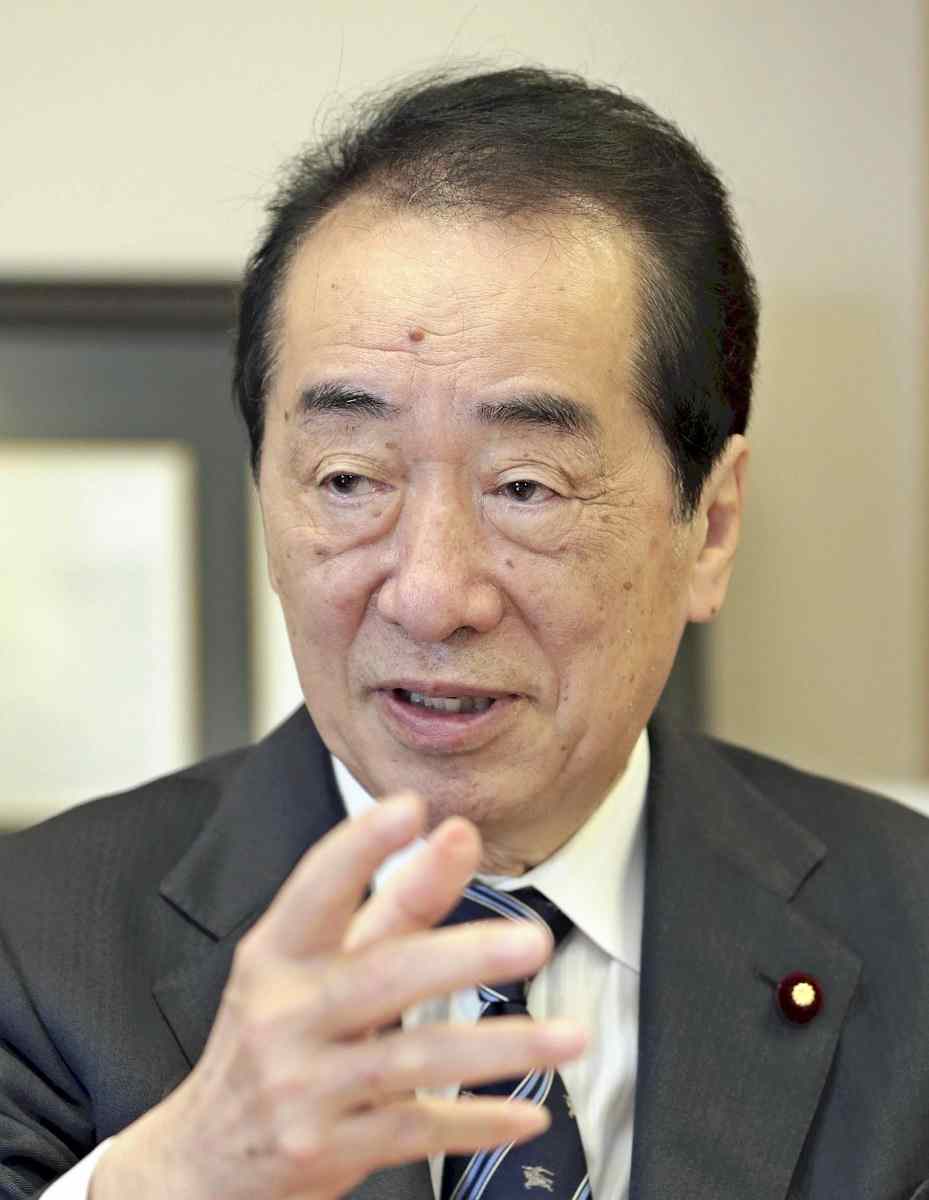11:41 JST, March 6, 2021
March 11 will mark 10 years since the Great East Japan Earthquake in 2011. The Yomiuri Shimbun spoke with Naoto Kan, who served as prime minister when the unprecedented disaster occurred, and asked him to review the situation at the time to pass on lessons for the future. The following is excerpted from the interview.
In the middle of the night on Feb. 13 this year, a large earthquake occurred with a seismic intensity of upper 6 on the Japanese scale of seven, with its epicenter off the coast of Fukushima Prefecture.
As my house in Tokyo shook strongly, the events of the Great East Japan Earthquake instantly arose in my mind. Aftershocks continue there even today, making me feel that even though a decade has passed, we are not out of the woods yet.
The Great East Japan Earthquake was a major disaster that also triggered the accident at Tokyo Electric Power Company Holdings, Inc.’s Fukushima No. 1 nuclear power plant.
Facing one of the world’s worst nuclear accidents, I had to rely on other countries as I always felt that Japan would not be able to survive as a nation if it failed to handle the accident.
I was truly grateful for the cooperation extended by other countries, including the United States, but I thought that it was my responsibility as prime minister to tackle the accident with the resolution that we should deal with it on our own as much as possible.
This belief prompted me to rush to TEPCO headquarters, asking it not to pull out of the accident-hit plant. I likewise went to the Fukushima nuclear power plant on the day following the nuclear accident.
Municipalities in turmoil
As I met for the first time with Masao Yoshida, who was in command as the chief of the Fukushima plant, I was able to confirm his strong sense of responsibility. Although I was criticized for visiting, even now, I believe it was the right thing to do.
Having made the decision as the chief of the government’s nuclear emergency response headquarters to expand the evacuation zone in Fukushima Prefecture, it was very painful to hear about the deaths of elderly people who were in hospitals or nursing-care facilities during the evacuation. This still pains me deeply even today.
As local governments were plunged into confusion at that time, these elderly people were forced to endure a transfer for many hours in search of alternative facilities to accept them.
As a consequence, those who were in the weakest condition lost their lives. I truly feel sorry for them.
Due to this major accident, my view on nuclear power generation has changed completely. Until then, I thought Japanese technical experts were so skilled that they would not cause any accidents triggered by human error, such as the 1979 accident at the Three Mile Island nuclear power plant in the United States or the one at the Chernobyl nuclear power plant in the now-defunct Soviet Union in 1986.
That’s why I promoted the export of Japanese nuclear power plants to Vietnam and other countries as the government’s leader, saying, “Japan’s nuclear power plants are safe.”
Position completely changed
But a nuclear power plant accident of that magnitude occurred. It was nothing but a man-made accident, as the plant was designed in a way that did not take into account the geographic conditions of Japan, an earthquake- and tsunami-prone country. This led to the meltdown.
My position has been completely turned around, and I have aimed to realize the concept of “zero nuclear,” allocating about 90% of my political activities to nuclear power issues over the past decade.
As a result of this major disaster, I feel strongly that the key point in risk management is anticipating the worst-case scenario and implementing measures to avoid it.
Though they differ in kind, I think the nuclear accident and the novel coronavirus pandemic have something in common when looked at from the viewpoint of risk management.
I feel that the administration of Prime Minister Yoshihide Suga has not clearly outlined to what extent the coronavirus could spread in Japan based on a worst-case scenario, and what measures should be taken to avoid it.
The other day I questioned Suga directly at a House of Representatives Budget Committee meeting, but I could not get a concrete answer.
Reconstruction efforts ongoing
Ten years have passed since the major disaster, but the post-quake reconstruction of the affected areas is still ongoing.
There has been a certain amount of progress in reconstruction when it comes to physical elements, such as building towns that can better deal with a tsunami. But the livelihoods of disaster-affected people have yet to be rebuilt, with the population in the stricken areas declining.
As a countermeasure, I want to work on the promotion of solar power generation on farmland, installing photovoltaic power generation equipment.
I am thinking of creating this kind of economic base to bring back the population, through the revival of agriculture and revenue from selling electricity.

Naoto Kan: Former Prime Minister
Kan served as prime minister from June 2010 to September 2011, under the administration led by the Democratic Party of Japan. He is currently the chief executive advisor of the Constitutional Democratic Party of Japan. He was elected 13 times to the House of Representatives. He is 74.
"Politics" POPULAR ARTICLE
-

Japan to Support Central Asian Logistics Route That Bypasses Russia, Plan to Be Part of Upcoming Summit in Tokyo
-

Japan to Tighten Screening of Foreigners’ Residential Status by Providing Information of Nonpayment of Taxes
-

Chinese, Russian Bombers Flew Unusual Path by Heading Toward Tokyo; Move Likely Meant to Intimidate Japan
-

Japan Plans National Database to Track Foreign Ownership of Real Estate, Land as It Weighs New Rules
-

Up to 199,000 Deaths Estimated From Mega-Tsunami; Most Recent Occurrence Took Place in 17th Century
JN ACCESS RANKING
-

Tokyo Economic Security Forum to Hold Inaugural Meeting Amid Tense Global Environment
-

Keidanren Chairman Yoshinobu Tsutsui Visits Kashiwazaki-Kariwa Nuclear Power Plant; Inspects New Emergency Safety System
-

Imports of Rare Earths from China Facing Delays, May Be Caused by Deterioration of Japan-China Relations
-

University of Tokyo Professor Discusses Japanese Economic Security in Interview Ahead of Forum
-

Japan Pulls out of Vietnam Nuclear Project, Complicating Hanoi’s Power Plans



-250x167.jpg)






















